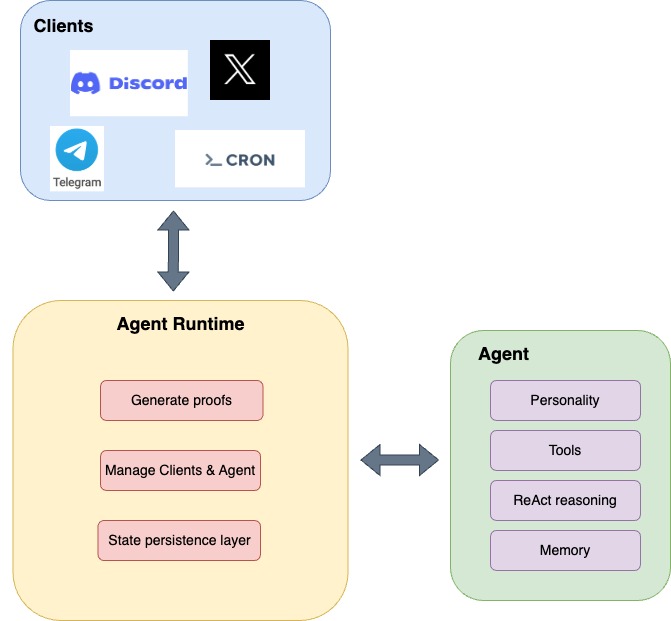What is an Agent Runtime?
For an agent to be truly autonomous, it must operate continuously, ready to process new requests in real time. This is precisely the role ofAgentRuntime. It is the core orchestration layer that manages agent execution, ensuring that messages are processed efficiently while maintaining the agent’s state.

How It Works
At a high level, theAgent Runtime follows this execution loop:
- Receive a Message – An input client sends a message to the runtime.
- Process the Message – The agent receives and handles the request.
- Send the Response – The agent’s output is forwarded to the appropriate client.
- Repeat – The runtime continuously handles incoming messages in a loop.
AgentRuntime interface is defined as follows
Agent Runtime **can handle any number of input/output clients concurrently, making it easy to implement all kinds of agents that can handle various workflows.
Using AgentRuntime
Based on the interface above, here’s an example of how the runtime is created.
AgentRuntime#run must be called.
AgentRuntime#run is async function. Therefore, it has to be passed to asyncio.run.
Conclusion
TheAgent Runtime is the backbone of autonomous agent execution, enabling seamless integration and scalability. It’s main responsibilities are:
- Orchestration – the runtime ties the agent execution flow together. It enables Agents to run indefinitely and autonomously. Handles multiple concurrent clients
- Validation - manages the types of messages coming in and making sure they are valid
- Integration – Supports multiple input/output sources, enabling build complex agents. It can be extended with additional components like memory and pricing

